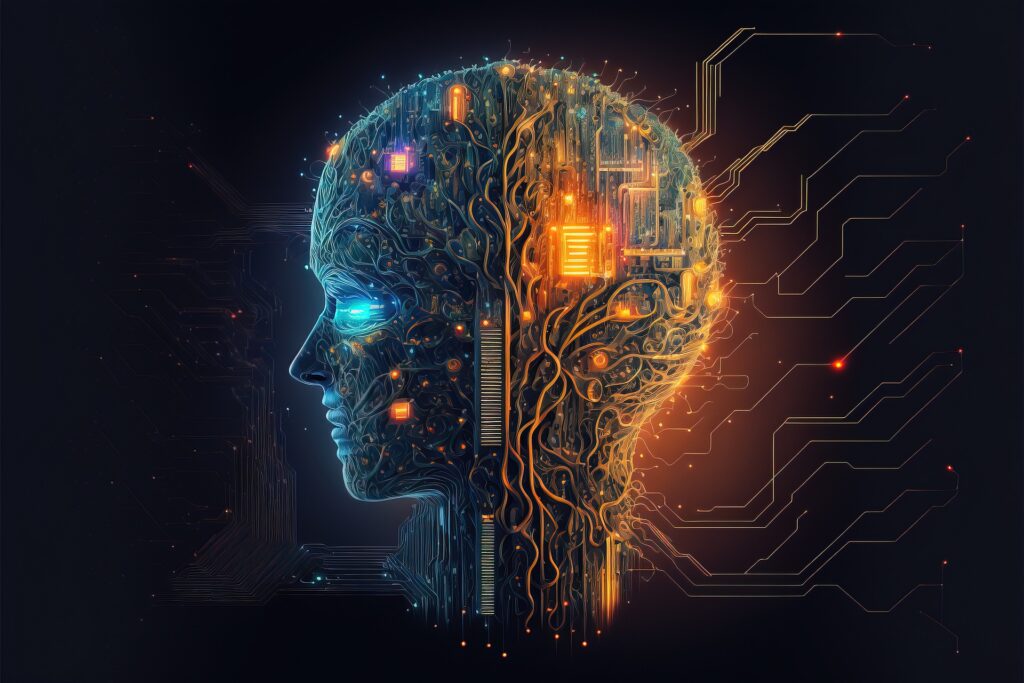
Ai autonomously
Artificial Intelligence( AI) is a amazing content. That frequently feels like it belongs in a wisdom fabrication novel. Still, it’s veritably real and formerly a huge part of our everyday lives.
The way AI works, especially autonomously. Can feel complex, but I’m then to break it down in a way that’s easy to understand. Let’s explore how AI can operate on its own, learn, make opinions.
What Is AI Really?
When I talk about AI, I’m referring to machines or software that can mimic human intelligence. We usually think of computers as devices that follow specific instructions and execute exactly what they’re programmed to do.
AI, though, is different. It doesn’t just follow a set of rules; it learns from data and experience.
Think of AI like a brain that gets smarter with time. Just like when we learn new chops, AI learns
At the heart of AI is data. Tons and tons of data.
However, the answer lies in training, If you’ve ever wondered how an AI can fete a cat in a picture or recommend a song you might like. AI systems are trained using a process called machine literacy.
Then’s how I like to suppose about it Imagine you want to educate me to fete apples. You’d show me thousands of filmland of apples — different sizes, colors, angles and after a while, I’d get really good at relating apples. That’s how AI works, too. It gets fed massive quantities of data( images, textbook, figures) and learns to fete patterns from that data.
But then’s the cool part Once an AI is trained, it can start making opinions on its own. That’s what we mean when we say it works autonomously.
How ai thinks for making decisons ?
So, how does an AI actually make opinions without mortal input? Well, it’s not magic — although it can feel that way! AI uses algorithms, which are basically sets of rules or instructions that guide its thinking. When an AI receives new information, like an image or a question, it processes that input grounded on what it’s learned from its former data.
Here we see some steps
Input: AI receives new data, whether it’s a picture, voice command, or piece of text.
Processing: It analyzes the data using patterns it has learned from previous training. If it’s identifying a picture of an animals, for instance, it compares the new image to the thousands of animals images it has already studied.
Decision: Based on its analysis, it makes a decision. For example,”This is a cat” or “This song seems like something you would enjoy.”
Action: AI acts on that decision by giving an answer, taking action, or storing that new information to improve its future decisions.
You and I often make decisions intuitively, but AI uses its algorithms and data to calculate the best possible outcome. That’s why sometimes it can even outperform humans in certain areas, like analyzing big datasets or predicting outcomes.
How AI Gets Smarter Over Time ?
The thing that amazes me most about AI is its capability to ameliorate itself. After an AI system makes a decision, it can check whether the outgrowth was successful or not.However, it adjusts its processes to get better the coming time, If it made a mistake. This cycle of learning from its own successes and failures is called a feedback circle.
Imagine if every time I made a wrong decision, I incontinently learned how to avoid that mistake in the future. AI has that superpower. Over time, it gets smarter and more accurate because it keeps refining itself.
Ai works autonomously means
When we say that AI works autonomously, we mean that it can handle tasks without mortal intervention. Once it’s been trained, it no longer needs someone to tell it what to do at every step. It’s like tutoring someone to ride a bike — formerly they know how, they do n’t need you holding the bars.
For illustration, consider tone- driving buses .We use vehciles which can be handle by Ai to navigate roads, avoid obstacles, and follow business laws. They make real- time opinions about steering, speed, and route choices, all without mortal motorists telling them what to do. The AI processes the information from its detectors, like cameras and radar, and makes quick opinions — just like we do when we drive.
Everyday AI Where We See Autonomy in Action.You might be surprised to learn how numerous places AI is formerly working autonomously in our diurnal lives. Then are just a many exemplifications that I’ve noticed.
Virtual sidekicks like Siri, Alexa, or Google Assistant can answer questions, set monuments, and indeed control your smart home bias. They “ hear ” to your voice, process the command, and act without demanding a person on the other end.
Streaming Platforms like Netflix or Spotify use AI to recommend pictures or music grounded on what you’ve preliminarily watched or heeded to. Their AI systems prognosticate what you might enjoy, so you do n’t have to scroll endlessly for the perfect choice.
Smart Home bias similar as thermostats and security cameras use AI to learn your habits. Your thermostat might acclimate the temperature automatically when it senses you’ve left home, or your camera can warn you if it detects movement when you’re down.
In each of these cases, AI is working autonomously in the background, making our lives easier without us indeed realizing it.
Future of AI Autonomy
It’s exciting to think about where AI autonomy could take us in the future. I believe we’re only scratching the surface. Imagine AI systems that can diagnose diseases more accurately than doctors, or robots that can perform complex tasks like cooking or cleaning entirely on their own.
Of course, there are still challenges to overcome, such as ensuring AI systems are fair and don’t have biases. But as technology advances, AI’s ability to work autonomously will continue to grow, transforming industries and daily life in ways we can’t even imagine yet.
In summary, AI works autonomously by learning from data, making decisions based on patterns, and improving itself over time through feedback loops. It’s a little like having a super-intelligent assistant that gets smarter with experience. While AI might not think or feel like we do, its ability to operate independently makes it a powerful tool that’s already changing the world around us.
Whether it’s helping you find a movie, driving a car, or even running parts of a factory, AI is steadily becoming more autonomous. And the more I learn about it, the more I realize how incredible—and incredibly useful—this technology really is.

3 thoughts on “A Simple Guide to Understanding AI Independence”